Tech
10 Best HIPAA Compliance Softwares in 2023
Introduction
As the healthcare industry becomes increasingly digital, the need for robust HIPAA compliance softwares continues to grow. These software solutions assist organizations in meeting the requirements outlined in the Health Insurance Portability and Accountability Act (HIPAA) and safeguarding sensitive patient information from unauthorized access.
In this article, we will discuss the ten best HIPAA compliance softwares available in 2023. These solutions offer a wide range of features, including data encryption, access controls, audit trails, and risk assessments. Let’s dive into the details of each software and explore their unique offerings.
Everything you need to know about HIPAA Compliance – Sprinto
Sprinto
Sprinto is a comprehensive HIPAA compliance software that combines powerful features with user-friendly functionalities. It offers healthcare organizations a seamless experience in achieving and maintaining HIPAA compliance. Key features of Sprinto include:
Risk Assessments: Sprinto conducts thorough risk assessments, identifying vulnerabilities and potential security threats.
Policy and Procedure Management: The software assists organizations in creating, managing, and distributing HIPAA policies and procedures.
Training and Education: Sprinto provides training resources to educate employees about HIPAA regulations and security best practices.
Incident Response Planning: The software helps organizations develop effective incident response plans to mitigate the impact of data breaches.
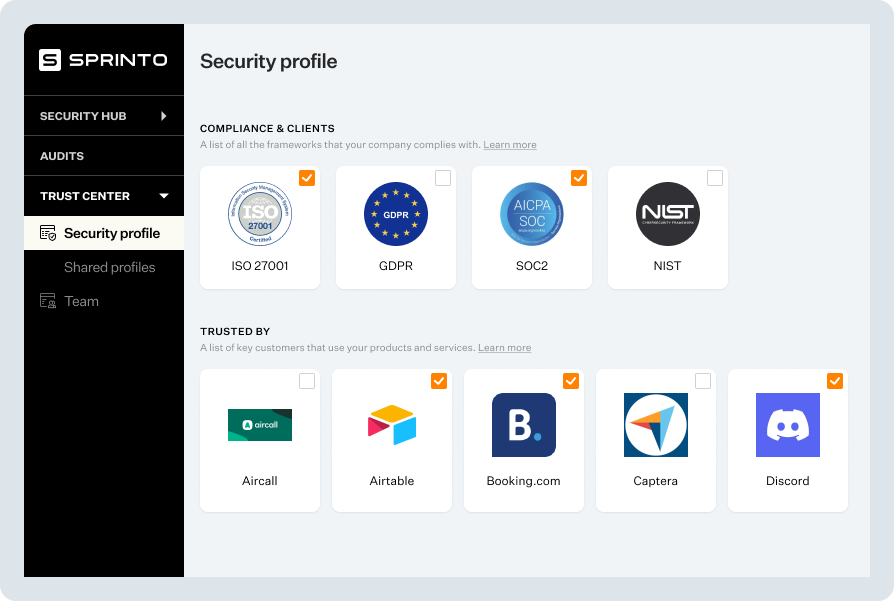
Compliance Suite
Compliance Suite is a comprehensive HIPAA compliance software designed to streamline compliance processes and ensure the security of protected health information (PHI). With its user-friendly interface and powerful features, Compliance Suite offers healthcare organizations a robust solution for achieving and maintaining HIPAA compliance. Key features include:
Encryption: Compliance Suite employs advanced encryption techniques to secure sensitive data both at rest and in transit.
Access Controls: The software provides granular access controls, allowing organizations to define user roles and permissions based on job responsibilities.
Risk Assessments: Compliance Suite facilitates thorough risk assessments, identifying vulnerabilities and suggesting remediation strategies.
Audit Trails: The software maintains detailed audit trails, logging all activities related to PHI access and modification.
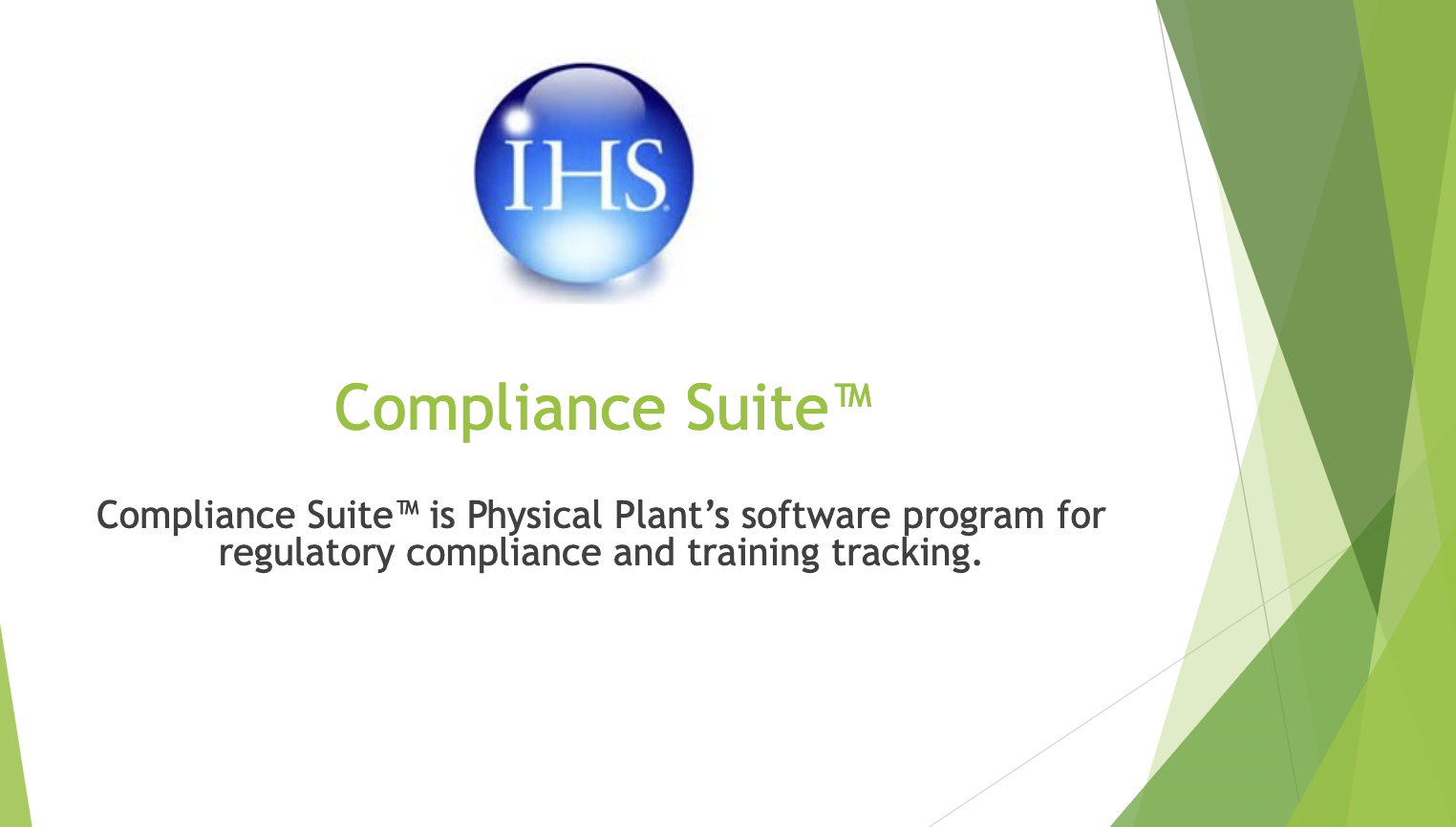
HIPAA Protector
HIPAA Protector offers a comprehensive suite of tools to help healthcare organizations achieve HIPAA compliance. This software solution focuses on risk assessment, vulnerability management, and employee training. Key features of HIPAA Protector include:
Risk Analysis: The software performs in-depth risk analysis to identify potential security threats and vulnerabilities within an organization’s IT infrastructure.
Remediation Guidance: HIPAA Protector provides actionable recommendations to address identified risks and vulnerabilities, ensuring compliance with HIPAA regulations.
Training Resources: The software offers training modules and resources to educate employees about HIPAA regulations and best practices.
Incident Response: HIPAA Protector includes incident response capabilities, enabling organizations to effectively handle and mitigate data breaches.
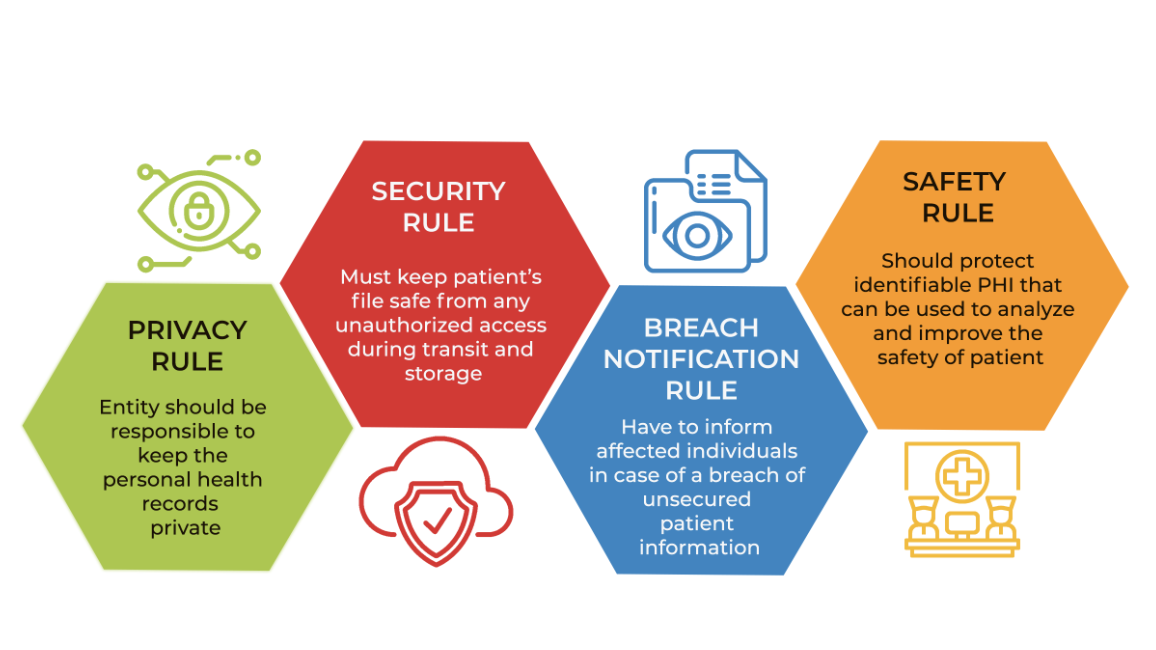
SecureShield
SecureShield is a HIPAA compliance software that combines robust security measures with user-friendly functionalities. It assists healthcare organizations in implementing and managing their HIPAA compliance programs effectively. Key features of SecureShield include:
HIPAA Policies and Procedures: The software provides pre-built HIPAA policies and procedures templates, saving organizations valuable time and effort.
Automated Compliance Tasks: SecureShield automates various compliance tasks, such as policy distribution, employee training tracking, and risk assessments.
Document Management: The software offers centralized document management capabilities, ensuring easy access to necessary compliance documents.
Real-time Monitoring: SecureShield provides real-time monitoring of security events and alerts organizations of potential security breaches.

Compliance Guard
GHI ComplianceGuard is a cloud-based HIPAA compliance software that simplifies the process of achieving and maintaining compliance. It offers an intuitive interface and comprehensive features to meet the unique needs of healthcare organizations. Key features of ComplianceGuard include:
Compliance Assessments: The software conducts thorough assessments to identify compliance gaps and provides recommendations for improvement.
Documentation Management: ComplianceGuard offers document management capabilities, ensuring that all necessary compliance documents are organized and accessible.
Incident Response Planning: The software assists organizations in developing and implementing effective incident response plans, minimizing the impact of data breaches.
Business Associate Management: ComplianceGuard enables healthcare organizations to manage their relationships with business associates, ensuring compliance throughout the chain of trust.
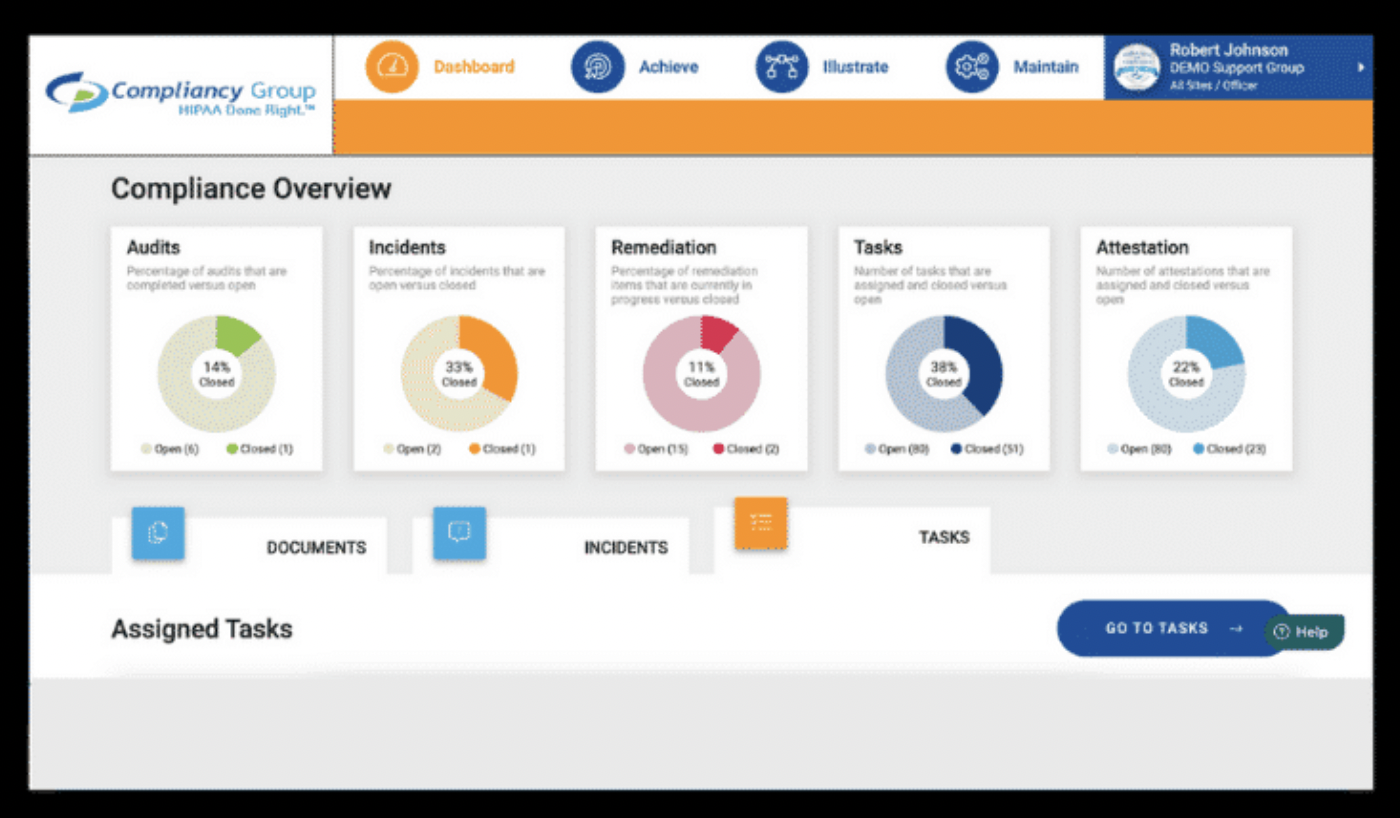
HIPAA Master
HIPAA Master is a comprehensive HIPAA compliance software that helps healthcare organizations streamline their compliance efforts. It offers a wide range of features to address the complex requirements of HIPAA regulations. Key features of HIPAA Master include:
Compliance Dashboards: The software provides visual dashboards that offer real-time insights into an organization’s compliance status and potential risks.
Policy and Procedure Management: HIPAA Master facilitates the creation, review, and distribution of HIPAA policies and procedures, ensuring consistent compliance across the organization.
Training and Awareness: The software offers training modules and awareness campaigns to educate employees about HIPAA regulations and security best practices.
Business Associate Tracking: HIPAA Master enables organizations to track and manage their relationships with business associates, ensuring compliance throughout the data sharing process.
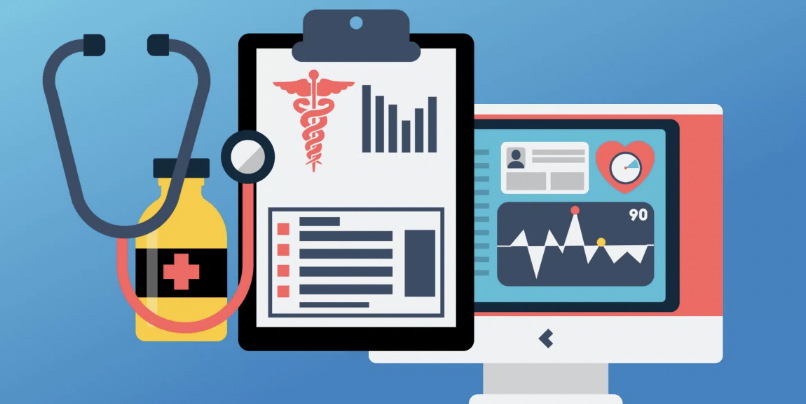
Privacy Defender
PrivacyDefender is a robust HIPAA compliance software designed to protect patient privacy and secure sensitive healthcare data. It offers a comprehensive set of features to assist healthcare organizations in achieving HIPAA compliance. Key features of PrivacyDefender include:
Access Controls: The software provides granular access controls, allowing organizations to restrict access to PHI based on user roles and permissions.
Incident Management: PrivacyDefender includes incident management capabilities, enabling organizations to track and respond to data breaches effectively.
Encryption and Data Masking: The software offers encryption and data masking functionalities to safeguard sensitive data both at rest and in transit.
Ongoing Compliance Monitoring: PrivacyDefender continuously monitors compliance status, providing real-time alerts and reports to assist organizations in maintaining HIPAA compliance.
Audit Trail
AuditTrail is a comprehensive audit management software designed to streamline compliance processes and ensure accountability. While not specifically designed for HIPAA compliance, it offers features that can greatly assist healthcare organizations in meeting HIPAA requirements. Key features of AuditTrail include:
Audit Planning and Scheduling: The software helps organizations plan and schedule compliance audits, ensuring regular assessments of their compliance programs.
Documented Audits: AuditTrail provides a centralized repository for storing audit documentation, making it easily accessible for compliance purposes.
Issue Tracking and Remediation: The software enables organizations to track audit findings and monitor the progress of remediation efforts.
Reporting and Analytics: AuditTrail generates comprehensive reports and analytics, providing insights into compliance performance and areas for improvement.

Compliance Pro
CompliancePro is a comprehensive HIPAA compliance software that helps healthcare organizations navigate the complexities of HIPAA regulations. It offers a range of features to simplify compliance management and ensure the security of patient data. Key features of STU CompliancePro include:
Risk Assessment and Management: The software conducts risk assessments to identify vulnerabilities and provides risk mitigation strategies.
Policy and Procedure Templates: CompliancePro offers pre-built policy and procedure templates that align with HIPAA regulations, saving organizations valuable time and effort.
Training and Education: The software provides training resources and educational materials to keep employees informed about HIPAA compliance and best practices.
Incident Response Planning: CompliancePro assists organizations in developing and implementing incident response plans to minimize the impact of data breaches.

Security Comply
SecurityComply is a comprehensive HIPAA compliance software that focuses on data security and privacy. It offers a wide range of features to assist healthcare organizations in achieving and maintaining HIPAA compliance. Key features of SecurityComply include:
Data Encryption: The software provides robust encryption mechanisms to protect sensitive data from unauthorized access.
Access Controls: SecurityComply allows organizations to define user roles and permissions, ensuring that only authorized personnel can access PHI.
Policy Management: The software facilitates the creation, review, and distribution of HIPAA policies, ensuring compliance across the organization.
Audit and Reporting: SecurityComply generates detailed audit logs and reports, providing organizations with visibility into compliance activities.
DataSafe
DataSafe is a comprehensive HIPAA compliance software that focuses on data protection and privacy. It offers a wide range of features to help healthcare organizations achieve and maintain HIPAA compliance. Key features of DataSafe include:
Data Encryption: The software employs strong encryption algorithms to protect sensitive data from unauthorized access.
Risk Assessments: DataSafe conducts comprehensive risk assessments to identify vulnerabilities and prioritize mitigation efforts.
Incident Response Management: The software assists organizations in developing and implementing effective incident response plans, ensuring a timely and coordinated response to data breaches.
Compliance Documentation: DataSafe offers centralized documentation management, ensuring that all necessary compliance documents are organized and easily accessible.
Conclusion
In the digital age, HIPAA compliance is crucial for healthcare organizations to protect patient data and maintain the trust of their patients. The ten HIPAA compliance softwares mentioned in this article provide robust solutions to simplify compliance management and enhance data security.
From encryption and access controls to risk assessments and incident response, these software solutions offer a comprehensive set of features tailored to the unique needs of healthcare organizations.
By leveraging the power of these HIPAA compliance softwares, healthcare providers can confidently navigate the evolving regulatory landscape and ensure the privacy and security of patient information
SEE ALSO: Google’s AI-Powered Note-Taking Tool ‘Project Tailwind’: How It Works & Early Access

Tech
US: A Judge Mandates that Google Allow Competing App Stores to Access Android

(VOR News) – The ruling is that Google, the greatest technology firm in the world, is required to make its Android smartphone operating system available to merchants that supply applications that are in direct rivalry with Google’s. This decision was reached by a judge in the United States of America.
The Android Play store, which is owned and operated by Google, was found to be an example of an illegal monopoly arrangement by a jury in the state of California on Monday. The finding was reached by a jury. Monday is the day that this decision was come to.
An earlier federal judge ruled Google’s search engine illegal.
This finding, which came after that decision, has forced the company to suffer yet another setback. As a result of the corporation having already encountered its initial obstacle, this decision has been established. This particular decision was made by the judge during the month of August, when the month was in progress.
In light of the fact that the decision was made, what exactly does it mean that the choice was accepted?
In accordance with the verdict, Google is obligated to make it possible for users to download Android app stores that are offered by third-party competitors. For a period of three years, the corporation is prohibited from imposing restrictions on the usage of payment mechanisms that are integrated into the application.
In addition, it is important to keep in mind that Google does not possess the right to impose restrictions on the utilization of ways to make payments online.
Additionally, the verdict makes it unlawful for Google to give money to manufacturers of smartphones in order to preinstall its app store. Smartphone manufacturers are prohibited from doing so.
Furthermore, it prevents Google from the possibility of sharing the revenue that is generated by the Play store with other companies that are in the industry of delivering mobile applications.
In addition to this, the court has mandated the establishment of a technical committee that will be made up of three different people chosen at random.
The committee will be responsible for monitoring the implementation of the reforms and finding solutions to any disagreements that may occur as a consequence of the implementation of the reforms while they are being implemented. This task will fall under the committee’s purview so that it may fulfill its duties.
However, certain components were allowed to be put into action until July 1st, despite the fact that the judge’s statement suggested that the ruling would take effect on November 1st. The statement was the basis for the ruling, which ultimately became effective.
Particularly, I wanted to know what Google’s reaction would be.
There is a fact that Google does not adhere to this directive, which has been brought to their attention. This document argued that the alterations that the judge had ordered to be made would “cause a range of unintended consequences that will harm American consumers, developers, and device makers.”
The judge had ordered the modifications to be implemented. The alterations were to be carried out as indicated by the judge’s ruling. The judge made it clear that he expected these revisions to be carried out in accordance with his guidance.
The company’s regulatory affairs vice president, Lee-Anne Mulholland, provided the following statement: “We look forward to continuing to make our case on appeal, and we will continue to advocate for what is best for developers, device manufacturers, and the billions of Android users around the world.”
On average, over seventy percent of the total market for smartphones and other mobile devices is comprised of mobile devices that are powered by the Android operating system. Both smartphones and other small mobile devices are included in this category.
In the event that the Play app store continues to be shown on the home page and that other Google applications are pre-installed prior to the installation of the Android application, smartphone manufacturers are entitled to install the Android application at no cost at their discretion.
Additionally, the Android application can be installed on devices that are manufactured for smartphones.
SOURCE: DWN
SEE ALSO:
Over The Planned “Link Tax” Bill, Google Threatens to Remove NZ News Links.
Tech
WhatsApp Now Features a “Mention” Tool for Status Updates and Stories.

(VOR News) – Those who use WhatsApp now have the ability to mention other people in their stories or status updates as a consequence of a feature that was only recently enabled on the platform.
Previous to this point, this capability was not available. It wasn’t until quite recently that this capability became available to the public.
According to the information that was provided by the company, users now have the opportunity to tag close friends in their stories, and the person who is mentioned will have the option to go back and re-share an earlier version of that story. This information was provided by the company. The corporation was kind enough to reveal this information to us.
Because of a new feature that has been added to the WhatsApp app, users now have the opportunity to like individual stories and status updates.
This capability was previously unavailable to WhatsApp users.
A significant amount of progress has been made in this context. Alternative readers now have the chance to “like” a work, which is comparable to liking a post on Facebook. This feature was introduced in recent years. When compared to the past, this is a tremendous shift.
At one point in time, viewers were only permitted to observe the total number of views that a particular story had gotten. These restrictions were eliminated in later versions of the software.
Additionally, it is essential that the likes and reactions to a story be kept anonymous during the entire process. One of the factors that contributes to the general mystery that surrounds this characteristic is the fact that this is one of the elements.
The person who brought it to the attention of others is the only person who will be able to judge who enjoyed it and who did not care about it. These individuals will be able to make this determination.
A notification will be issued to the individual who was referenced earlier in the sentence and who was named in the story or status update that was discussed. A notification of this nature will be sent to the individual via WhatsApp.
This message will be sent to the user in question whenever that person makes a reference to another person while they are in the process of elaborating on a narrative or updating their status. You will receive a notification alerting you that you have been tagged in the narrative.
This notification will be delivered to the person who receives this message. In addition, students will be provided with the opportunity to re-share the tale for themselves.
It is important to note that if the names of individuals who have been referenced in a narrative or a status update are included in any of these, then the names of those individuals will not be accessible to any third party through any of these. In light of the fact that the identities of those individuals will be concealed from public disclosure, this is the condition that will be required.
While WhatsApp recently made the announcement that it will be incorporating this functionality, it is highly likely that not all users will have access to it at the same time.
This is despite the fact that WhatsApp recently made this announcement.
Despite the fact that WhatsApp has only recently made a public announcement that it will move forward with the deployment, this is the situation that has presented itself.
As soon as a short period of time has elapsed, access will be made available to each and every person on the entire world.
Additionally, WhatsApp has hinted that new functionalities might be introduced to the status and updates tab in the future months.
The purpose of these capabilities is to provide users with assistance in maintaining healthy connections with the individuals who play a vital role in their living experiences. This is done in order to give users with support in maintaining close relationships with the folks who are the subject of the inquiry.
It is with the purpose of supporting users in successfully keeping close ties with the individuals in question that this step is taken.
SOURCE: DN
SEE ALSO:
Over The Planned “Link Tax” Bill, Google Threatens to Remove NZ News Links.
Accenture and NVIDIA Collaborate to Enhance AI Implementation.
Tech
Over The Planned “Link Tax” Bill, Google Threatens to Remove NZ News Links.

(VOR News) – Google has sent a strong message to the New Zealand government, threatening to stop boosting local news content should the Fair Digital News Bargaining Bill become law.
The law, put up by the Labour government and backed by the coalition in power at the moment, mandates that digital companies such as Google pay back news organizations for links to their material.
News publishers, on the other hand, charge the tech giant with “corporate bullying.”
Google says this measure may have unanticipated effects.
Google New Zealand’s country director, Caroline Rainsford, voiced her worries that the law, which is being referred to as a “link tax,” is not doing enough to support the media industry in New Zealand right now.
She underlined that Google would have to make major adjustments if the previously mentioned law were to pass, including cutting off links to news articles from its Search, News, and Discover platforms and cutting off financial ties with regional publications.
According to Rainsford, similar legislation has been proposed and approved in other nations including Australia and Canada, but it has not been proven to be effective there and breaches the principles of the open web.
She drew attention to the fact that smaller media outlets will be most negatively impacted, which will limit their capacity to reach prospective audiences.
Google says its alternative options will protect smaller, local media from negative effects.
Conversely, it conveys apprehension regarding the possible fiscal obligations and vagueness of the legislation, which it feels generates an intolerable level of ambiguity for enterprises functioning within New Zealand.
The New Zealand News Publishers Association (NPA) has reacted to Google’s warnings by alleging that the internet behemoth is using coercive tactics.
They specifically contend that the need for regulation stems from the market distortion that Google and other tech giants have created, which has fueled their expansion into some of the most significant corporations in global history.
The legislation aims to create a more equal framework that media businesses can use to negotiate commercial relationships with technological platforms that profit from their content.
New Zealand Media Editors CEO Michael Boggs stated that he was in favor of the bill, citing the fact that Google now makes a substantial profit from material created by regional publications.
He also emphasized that the use of artificial intelligence by Google—which frequently makes references to news articles without giving credit to the original sources—highlights the significance of enacting legislation.
Paul Goldsmith, the Minister of Media and Communications, has stated that the government is now evaluating various viewpoints and is still in the consultation phase.
He stated that the government and Google have been having continuous talks and will keep up these ongoing discussions.
However, not all political parties accept the validity of the Act.
The ACT Party’s leader, David Seymour, has voiced his displeasure of the proposal, saying that Google is a game the government is “playing chicken” with. He threatened the smaller media companies, saying that they would suffer from worse search engine rankings if the internet giant followed through on its promises.
Seymour contended that it is not the government’s responsibility to shield companies from shifts in the market brought about by consumer preferences.
The things that have happened in other nations are similar to what has happened in New Zealand.
Google has agreements with a number of Australian media firms that are in compliance with its News Media Bargaining Code. These agreements contain provisions that permit an annual cancellation of these agreements.
Due to the government’s decision to exempt Google from the Online News Act, the company has committed to supporting news dissemination by contributing annually to the Canadian journalistic community.
The New Zealand measure is consistent with global approaches aimed at regulating the relationships that exist between technology corporations and media organizations.
It’s hard to say what will happen with the Fair Digital News Bargaining Bill as the discussion goes on. Google and the New Zealand media landscape are preparing for what might be a protracted legal battle.
SOURCE: TET
SEE ALSO:
Accenture and NVIDIA Collaborate to Enhance AI Implementation.
-

 News4 years ago
News4 years agoLet’s Know About Ultra High Net Worth Individual
-
Entertainment2 years ago
Mabelle Prior: The Voice of Hope, Resilience, and Diversity Inspiring Generations
-
News11 years ago
Enviromental Groups Tell Mekong Leaders Lao Dam Evaluation Process Flawed
-

 Health4 years ago
Health4 years agoHow Much Ivermectin Should You Take?
-

 Tech3 years ago
Tech3 years agoTop Forex Brokers of 2023: Reviews and Analysis for Successful Trading
-

 Lifestyles3 years ago
Lifestyles3 years agoAries Soulmate Signs
-

 Entertainment3 years ago
Entertainment3 years agoWhat Should I Do If Disney Plus Keeps Logging Me Out of TV?
-

 Health3 years ago
Health3 years agoCan I Buy Ivermectin Without A Prescription in the USA?